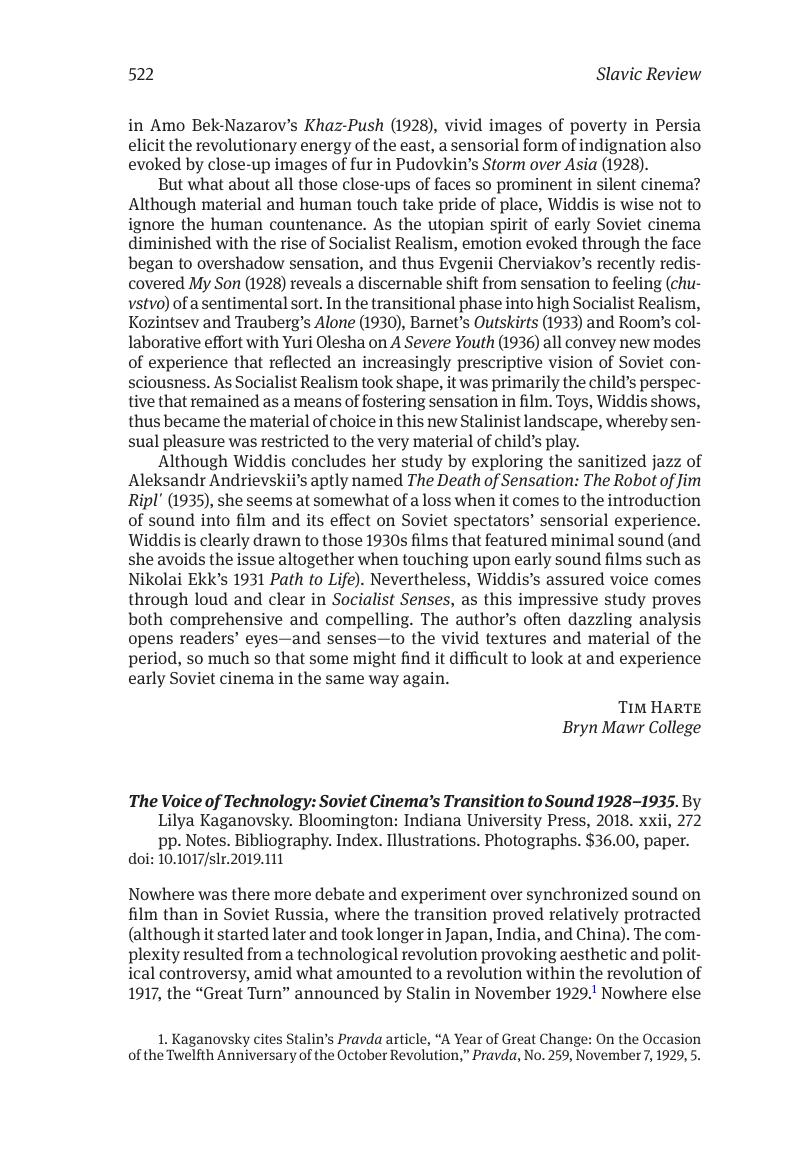No CrossRef data available.
Article contents
The Voice of Technology: Soviet Cinema's Transition to Sound 1928–1935. By Lilya Kaganovsky. Bloomington: Indiana University Press, 2018. xxii, 272 pp. Notes. Bibliography. Index. Illustrations. Photographs. $36.00, paper.
Published online by Cambridge University Press: 02 August 2019
Abstract

- Type
- Featured Reviews
- Information
- Copyright
- Copyright © Association for Slavic, East European, and Eurasian Studies 2019
References
1. Kaganovsky cites Stalin’s Pravda article, “A Year of Great Change: On the Occasion of the Twelfth Anniversary of the October Revolution,” Pravda, No. 259, November 7, 1929, 5Google Scholar.
2. “Sergei Eisenstein and Grigori Alexandrov: A Experiment Intelligible to the Millions,” in Richard Taylor and Ian Christie, eds., The Film Factory: Russian and Soviet Cinema in Documents 1896–1939, 257.
3. In a letter to Leon Moussinac dated June 4, 1929, he wrote: “it is my obsession to add sound to Old and New. Have to do that abroad.” See Leyda, Jay and Voynow, Zina, Eisenstein at Work (New York, 1982)Google Scholar, 38. See also my discussion of this abortive plan in the introduction to Christie, Ian and Taylor, Richard, Eisenstein Rediscovered (London, 1993), 11Google Scholar.
4. Leyda and Voynow, Eisenstein at Work, 39–40.
5. A rare exception is Phil Cavendish’s study of Soviet cinematography, The Men with the Movie Camera: the Poetics of Visual Style in Soviet Avant-Garde Cinema of the 1920s (Oxford: Berghan, 2013)Google Scholar


